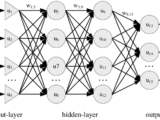
Convolutional Neural Networks (CNNs)
May 4, 2024In the realm of artificial intelligence and machine learning, few innovations have reshaped the landscape as profoundly as Convolutional Neural Networks (CNNs). These sophisticated architectures have become the cornerstone of various applications, from image recognition to natural language processing. In this article, we delve into the intricate workings of CNNs, exploring their structure, applications, and the profound impact they have had on modern technology.
Understanding CNNs: A Deep Dive
At its core, a Convolutional Neural Network is a class of deep neural networks, primarily designed to process and analyze visual data, such as images. What sets CNNs apart from traditional neural networks is their ability to automatically and adaptively learn spatial hierarchies of features from the input data. This is achieved through the clever application of convolutional layers, pooling layers, and fully connected layers.
Convolutional Layers:
The cornerstone of CNNs, convolutional layers, apply convolution operations to the input data. These operations involve sliding a small matrix called a kernel or filter across the input data, performing element-wise multiplication and aggregation to produce feature maps. By employing multiple convolutional layers, CNNs can extract increasingly abstract features from the input data, enabling them to recognize patterns and shapes at different levels of abstraction.
Pooling Layers:
Pooling layers are interspersed between convolutional layers to reduce the spatial dimensions of the feature maps while retaining important information. Common pooling operations include max pooling and average pooling, which downsample the feature maps by selecting the maximum or average value within a localized region. This process helps in making the network more robust to variations in the input data and reducing computational complexity.
Fully Connected Layers:
Following the convolutional and pooling layers, fully connected layers are employed to perform high-level reasoning and decision-making based on the extracted features. These layers connect every neuron in one layer to every neuron in the next layer, allowing the network to learn complex relationships between the features and the target output.
Applications of CNNs:
The versatility and effectiveness of CNNs have led to their widespread adoption across various domains. Some notable applications include:
Image Classification:
CNNs excel in image classification tasks, accurately identifying objects and patterns within images. They have been deployed in autonomous vehicles, medical imaging diagnostics, and facial recognition systems, among others.
Object Detection:
CNNs can not only classify objects but also localize them within an image. This capability makes them invaluable in object detection applications, such as surveillance systems, robotics, and augmented reality.
Image Segmentation:
By segmenting images into meaningful regions, CNNs enable precise understanding and analysis of visual data. This is particularly useful in medical imaging for identifying tumors, segmenting organs, and delineating anatomical structures.
Natural Language Processing (NLP):
While originally designed for visual data, CNNs have been adapted to NLP tasks, such as sentiment analysis, text classification, and language translation. By treating text as a spatial sequence of words, CNNs can extract hierarchical features for processing and analysis.
The Impact of CNNs:
The advent of Convolutional Neural Networks has revolutionized numerous industries and transformed the way we interact with technology. Their ability to analyze and interpret visual data with remarkable accuracy has paved the way for groundbreaking advancements in fields such as healthcare, transportation, and entertainment.
In healthcare, CNNs have empowered clinicians with tools for early disease detection, personalized treatment planning, and medical image analysis. From detecting cancerous tumors in radiological scans to predicting patient outcomes based on clinical data, CNNs are driving innovation and improving patient outcomes. In the realm of autonomous vehicles, CNNs play a crucial role in enabling perception systems to recognize and interpret the surrounding environment. By accurately identifying pedestrians, vehicles, and traffic signs, CNN-powered systems enhance safety and reliability, ushering in the era of self-driving cars.
Moreover, the entertainment industry has embraced CNNs to deliver immersive experiences and personalized content to audiences worldwide. From recommendation systems that suggest movies and music based on individual preferences to deepfake technology that seamlessly alters visual content, CNNs are reshaping the entertainment landscape in unprecedented ways.
Future Directions:
As the field of deep learning continues to evolve, so too will the capabilities of Convolutional Neural Networks. Researchers are actively exploring avenues to enhance the efficiency, interpretability, and robustness of CNNs, paving the way for even more impactful applications.
One promising direction is the integration of CNNs with other architectures, such as recurrent neural networks (RNNs) and attention mechanisms, to tackle complex tasks that require both spatial and temporal reasoning. This hybrid approach holds great potential for advancing fields like video understanding, machine translation, and autonomous decision-making.
Furthermore, efforts are underway to develop CNNs that are more energy-efficient and capable of learning from limited or noisy data. By leveraging techniques such as knowledge distillation, transfer learning, and meta-learning, researchers aim to democratize access to CNN technology and address real-world challenges in resource-constrained environments.
Conclusion:
Convolutional Neural Networks stand as a testament to the power of deep learning and the boundless potential of artificial intelligence. From revolutionizing healthcare and transportation to redefining entertainment and beyond, CNNs have left an indelible mark on society, shaping the way we perceive and interact with the world around us. As we continue to push the boundaries of innovation, CNNs will undoubtedly remain at the forefront of technological advancement, driving progress and unlocking new possibilities for generations to come.


